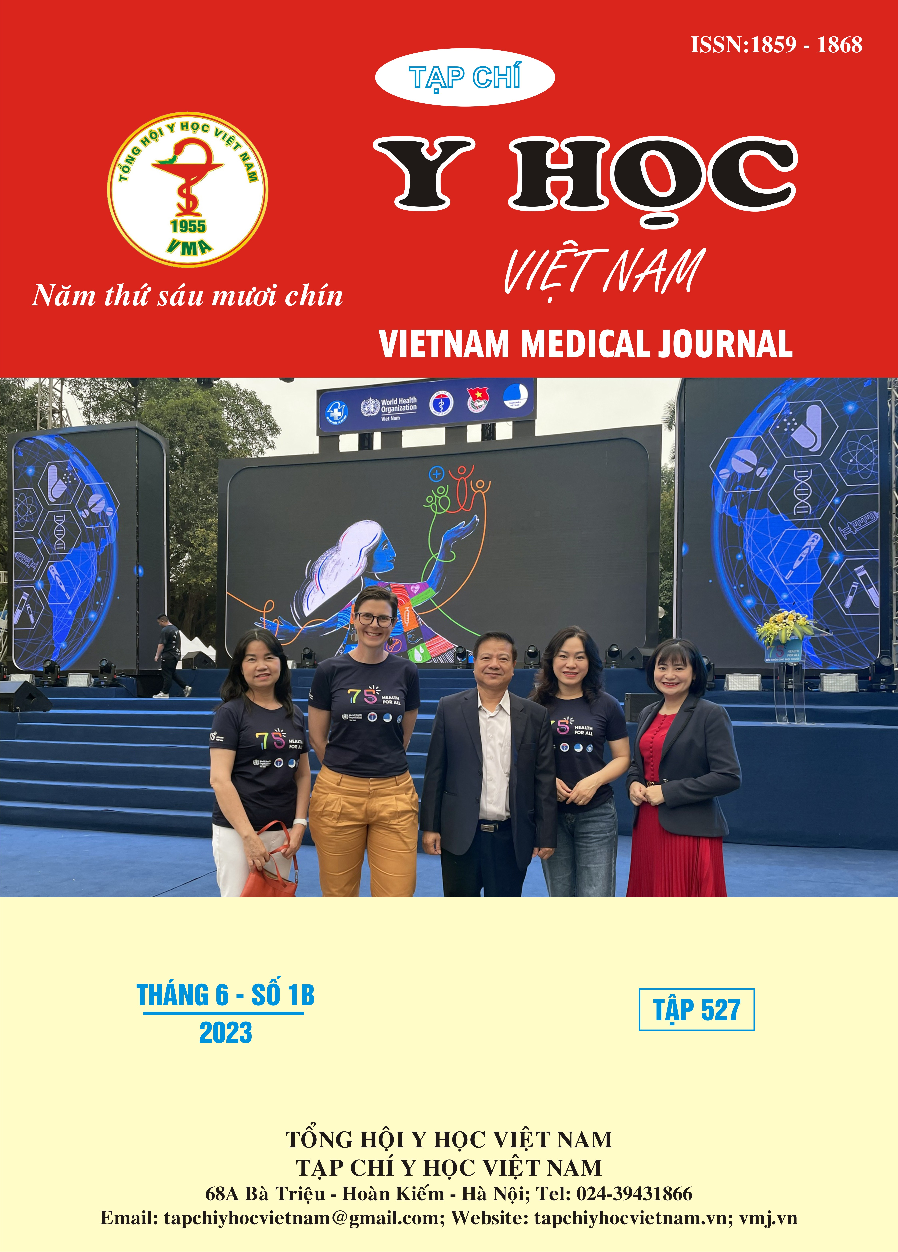COST-EFFECTIVENESS ANALYSIS OF SACUBITRIL/VALSARTAN VERSUS ACEI IN THE TREATMENT OF HEART FAILURE WITH REDUCED EJECTION FRACTION IN VIETNAM
Main Article Content
Abstract
Objectives: Cost-effectiveness analysis of sacubitril/valsartan compared to angiotensin-converting enzyme inhibitors (ACEIs) for treatment of heart failure with reduced ejection fraction (HFrEF) in Vietnam. Research methods: Modeling using Markov model for cost-effectiveness analysis in payer perspective. Collecting input parameters using systematic review, retrospective health insurance payment data at hospitals in Ha Noi and Ho Chi Minh city, and consultation of clinical experts. Results: Sacubitril/valsartan resulted in an increase of 0.50 QALY and 0.59 LYG compared to ACEIs; and increase total costs by 65.8 to 74.4 million VND. Incremental cost-effectiveness ratio (ICER) for sacubitril/valsartan ranged from 132.7 to 149.6 million VND/QALY compared to ACEIs. Mortality rate and quality of life coefficient most influence on the ICER value and the probability that sacubitril/valsartan is cost-effective compared to enalapril in the treatment of HFrEF is 90%. Conclusion: From payer perspective, with the 1-3 times GDP-per-capita willingness-to-pay threshold, sacubitril/valsartan is cost-effective compared to ACEIs in the treatment of HFrEF.
Article Details
Keywords
Sacubitril/valsartan, ACEI, HFrEF, cost-effectiveness
References
2. Loehr LR, Rosamond WD, Chang PP, Folsom AR, Chambless LE. Heart failure incidence and survival (from the Atherosclerosis Risk in Communities study). The American journal of cardiology. 2008;101(7):1016-22. doi: 10.1016/ j.amjcard.2007.11.061
3. McMurray JJ, Packer M, Desai AS, Gong J, Lefkowitz MP, Rizkala AR, et al. Angiotensin–neprilysin inhibition versus enalapril in heart failure. N Engl J Med. 2014;371:993-1004.
4. World Health O, Baltussen RMPM, Adam T, Tan-Torres Edejer T, Hutubessy RCW, Acharya A, et al. Making choices in health : WHO guide to cost-effectiveness analysis / edited by T. Tan-Torres Edejer ... [et al]. Geneva: World Health Organization; 2003.
5. Ademi Z, Pfeil AM, Hancock E, Trueman D, Haroun RH, Deschaseaux C, et al. Cost-effectiveness of sacubitril/valsartan in chronic heart-failure patients with reduced ejection fraction. Swiss Med Wkly. 2017;147:w14533. doi:10.4414/smw.2017.14533
6. Gaziano TA, Fonarow GC, Claggett B, Chan WW, Deschaseaux-Voinet C, Turner SJ, et al. Cost-effectiveness Analysis of Sacubitril/ Valsartan vs Enalapril in Patients With Heart Failure and Reduced Ejection Fraction. JAMA Cardiol. 2016; 1(6):666-72. doi:10.1001/ jamacardio.2016.1747
7. Park S-K, Hong S-H, Kim H, Kim S, Lee E-K. Cost-Utility Analysis of Sacubitril/Valsartan Use Compared With Standard Care in Chronic Heart Failure Patients With Reduced Ejection Fraction in South Korea. Clinical therapeutics. 2019; 41(6):1066-79.
8. Ahn SA, Jong P, Yusuf S, Bangdiwala SI, Pouleur HG, Rousseau MF. Early versus delayed enalapril in patients with left ventricular systolic dysfunction: impact on morbidity and mortality 15 years after the SOLVD trial. Journal of the American College of Cardiology. 2006; 47(9):1904-5.
9. Berg J, Lindgren P, Mejhert M, Edner M, Dahlström U, Kahan T. Determinants of utility based on the EuroQol five-dimensional questionnaire in patients with chronic heart failure and their change over time: results from the swedish heart failure registry. Value in Health. 2015;18(4):439-48.
10. Griffiths A, Paracha N, Davies A, Branscombe N, Cowie M, Sculpher M. The cost effectiveness of ivabradine in the treatment of chronic heart failure from the UK National Health Service perspective. Heart. 2014; 100 (13):1031-6.


